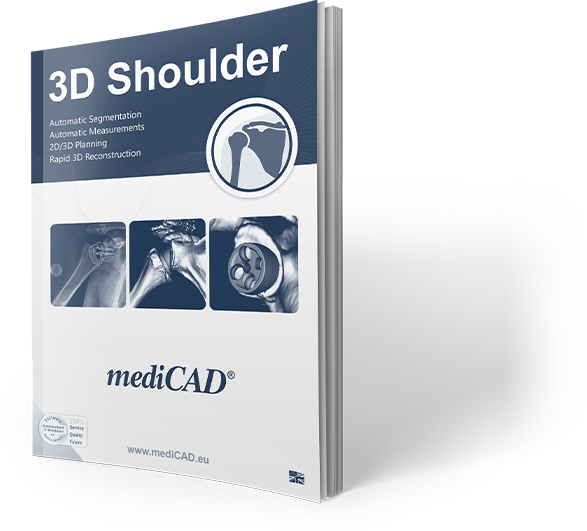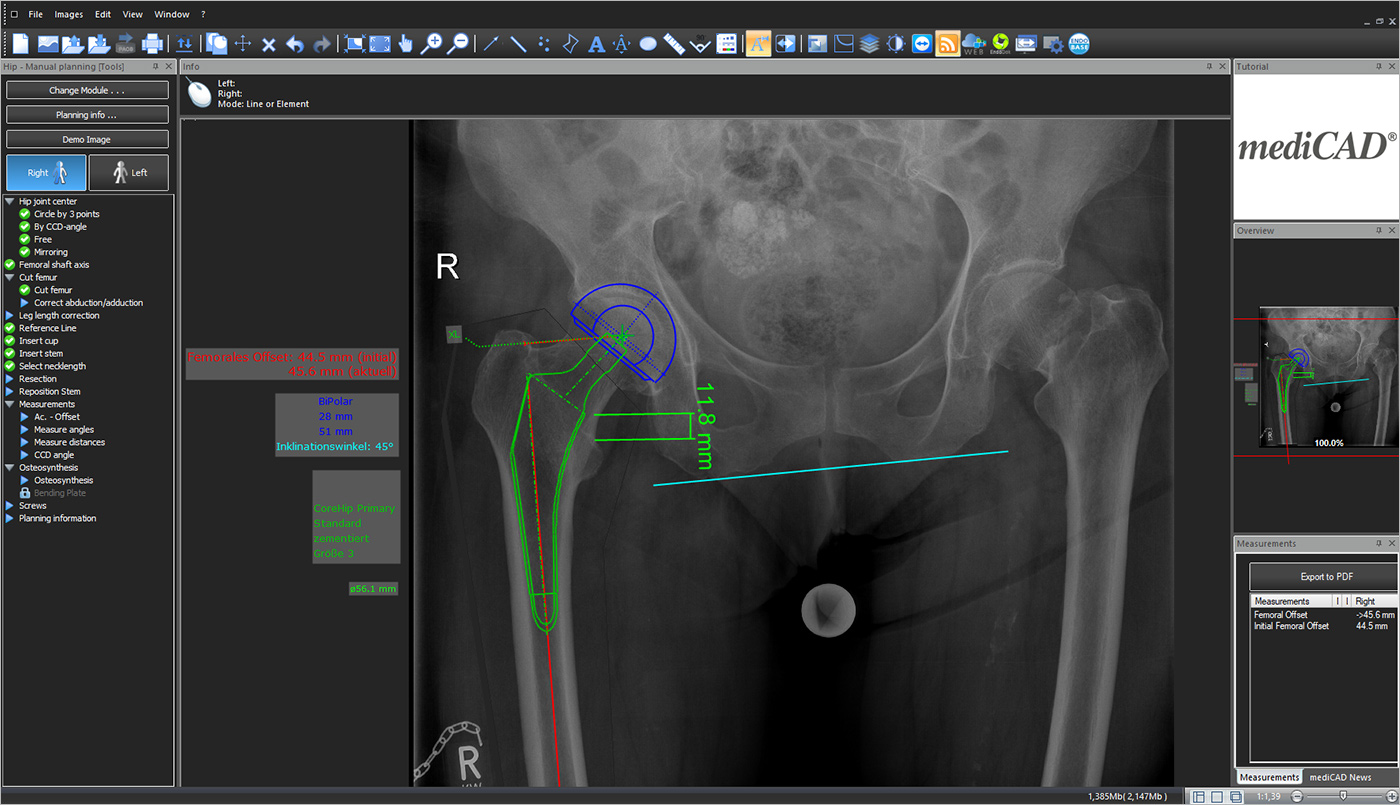



Lorem ipsum dolor sit amet, consetetur sadipscing elitr, sed diam nonumy eirmod tempor invidunt ut labore et dolore magna aliquyam erat, sed diam voluptua. At vero eos et accusam et justo duo dolores et

Veröffentlicht am, 21.10.2022
Medial femoral neck fracture surgery pre- and post-planning in mediCAD® 2D Hip
Does it sound familiar? A quick run to get the mail from the mailbox or a leisurely walk around the neighborhood? Especially in icy weather, a sudden fall can easily occur in such situations and everything happens very quickly. Severe pain in the hip, you can no longer get up and already admitted to the emergency rooms. The diagnosis of femoral neck fracture is quickly made. Conservative treatment is rarely possible. Peritrochanteric fracture is one of the most serious cases of mortality and morbidity among the elderly population. The number of hip fractures and surgeries for these fractures have increased significantly in recent years. This is explained by the increase in the number of elderly and therefore in the incidence of osteoporosis.
Fractures generally occur from 65 to 99 years of age and are 3 times more common for women. At this stage of life, there is a reduction in bone formation is mainly caused by a lower hormone production. With weaker bones, the elderly have an increased risk of fractures of spine, wrist, and hip. As a consequence, more and more orthopedic surgeons rely on mediCAD® Classic.
Particular attention must be paid to the length of stay until surgery. The less time that elapses, the lower the probability of serious secondary complications. Those affected should get back on their feet as quickly as possible. „A rolling stone gathers no moss.“ The treatment guidelines for trauma surgeons prescribe that a femoral neck fracture must be operated on within 6 to 24 hours.
A deep pelvic survey and, if necessary, an axial radiograph are used for diagnosis.
The axial radiograph is particularly needed for classification. The classification according to Pauwels, for example, can be used for the classification.
There are 3 main types mentioned here:

Fractures of this type tend to occur in the elderly after a fall. Two mechanisms can cause the fracture: falling directly on the hip or a twisting mechanism in which the patient’s torso rotates with the foot fixed. Some patients with a stress fracture (insufficiency) may fracture the proximal femur suddenly and spontaneously without a fall. Young people on the other hand usually fracture in traffic accidents or falls from height. Pain of sudden onset and inability to walk are the most common complaints. Some patients with an impacted fracture can walk even with a fractured neck of the femur.
mediCAD® improves the treatment possibilities of the medial femoral neck fracture:
In the case of type Pauwels I, one can proceed conservatively and first mobilize the patient and check whether it comes to slipping. In the case of surgical treatment, the following options are available:
 Early surgical intervention is recommended for most of these patients to reduce the complications associated with prolonged immobilization. The goal of surgery is to achieve initial stability and immediate mobilization to avoid complications such as deep vein thrombosis, thrombophlebitis, pulmonary embolism, urinary and pulmonary infection, and ulcers.
Early surgical intervention is recommended for most of these patients to reduce the complications associated with prolonged immobilization. The goal of surgery is to achieve initial stability and immediate mobilization to avoid complications such as deep vein thrombosis, thrombophlebitis, pulmonary embolism, urinary and pulmonary infection, and ulcers.
The difficult nature of the treatment of this fracture is due, in part, to the fact that the pattern of injury is anatomically distinct from other peritrochanteric fractures of the proximal femur and also to the complicated characteristics of femoral shaft fractures. Therefore, it should be treated with specially designed implants that can withstand significant muscle forces for a prolonged period of healing. As can be expected, this fracture has significantly higher non-union rates than other femoral fractures.
mediCAD® is a pioneer in helping orthopedic surgeons not only get implants but also get them to specifically fit the complex surrounding of the implant. Matching the exact sizing significantly contributes to a more accurate transplant process and fewer corrections in the aftermath post-surgery phase.